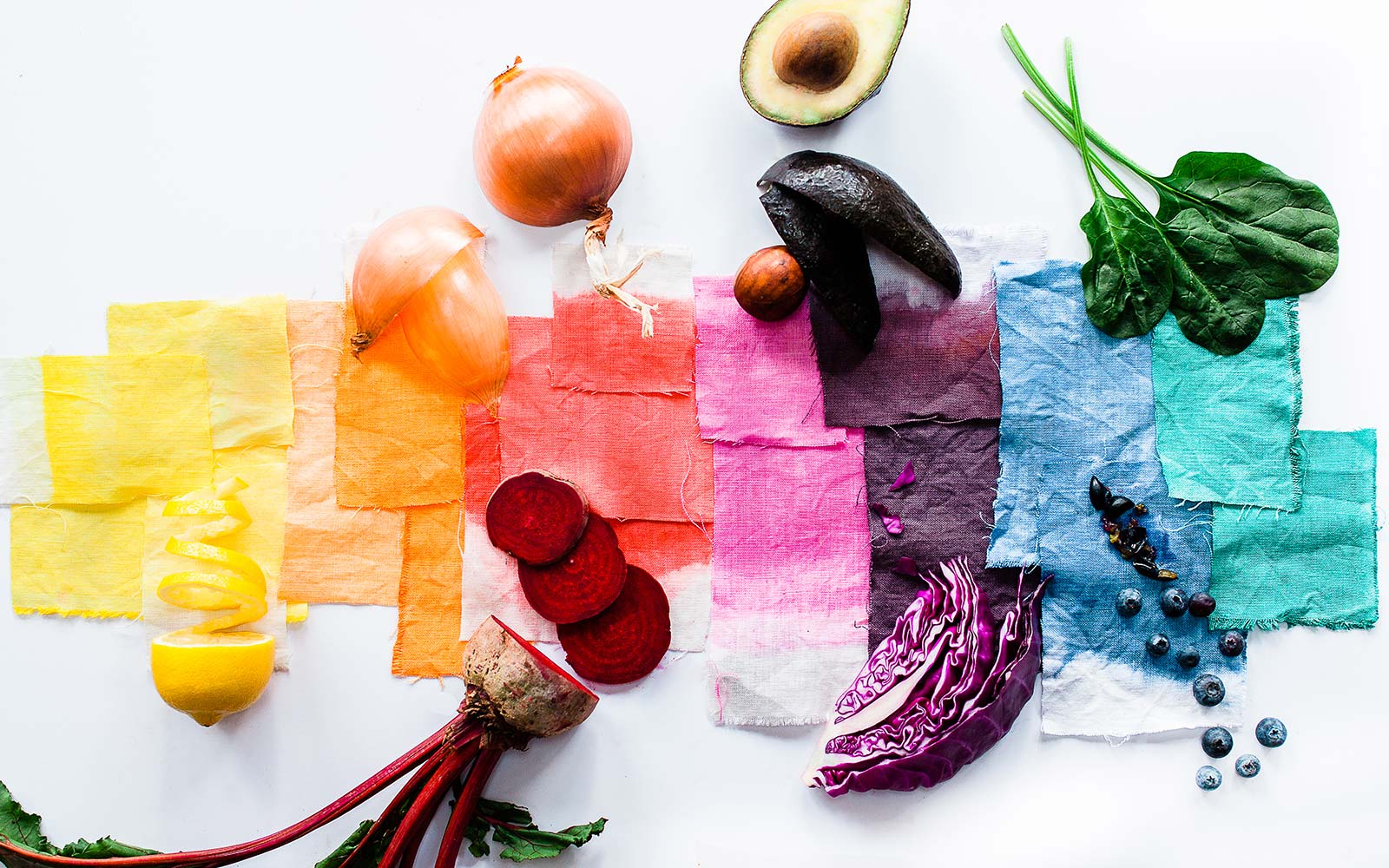In recent years, people have grown interested in sustainable and environmentally friendly practices. Even on a commercial basis, we have seen a difference. Such practices are hugely arising across various industries, including textiles. One area where significant progress has been made is in the use of natural dyes for fabric or printing clothes and fabrics. Natural dyes are derived from plant, mineral, or animal sources, offering a range of benefits compared to their synthetic counterparts. Throughout the write-up, we explore nine advantages of using natural dyes for dyeing on fabric.
Eco-Friendly and Sustainable
Using natural dyes promotes sustainability and reduces the environmental impact of textile production. Natural dyes are derived from renewable sources, such as plants and insects. Which can be cultivated or harvested without harming ecosystems. Additionally, the production of natural dyes requires fewer chemicals and energy compared to synthetic dyes, leading to reduced pollution and carbon emissions. By opting for natural dyes, textile artisans contribute to a more sustainable and eco-friendly industry.
Non-Toxic and Safe
One significant advantage of natural dyes is their non-toxic nature. Synthetic dyes often contain harmful chemicals, such as heavy metals and carcinogens. Which can be harmful to both human health and the environment. In contrast, natural dyes are typically non-toxic and biodegradable, posing no health risks during the dyeing process or to those who wear the finished textiles. This makes natural dyes a safer choice for textile workers, consumers, and the planet.
Rich and Unique Colours
Natural dyes offer a diverse and exquisite range of colours that cannot be precisely replicated by synthetic dyes. Each plant or natural source yields its own distinct shade, creating a sense of uniqueness in dyed textiles. The colours obtained from natural dyes often exhibit a subtle, organic beauty that evolves and matures over time, enhancing the aesthetic appeal of textiles.
Cultural and Traditional Significance
It have a rich history deeply rooted in various cultures and traditions around the world. Many indigenous communities have passed down the knowledge of natural dyeing techniques for generations. By using natural dyes, artisans, textile sourcing platforms and designers pay homage to these traditions, preserving cultural heritage and supporting local communities.
Improved Biodegradability
Unlike synthetic dyes, natural dyes are biodegradable and easily break down without causing harm to the environment. When natural-dyed textiles are discarded, they do not contribute to pollution or soil contamination. This aligns with the principles of the circular economy, where materials are designed to be biodegradable and return to the natural environment without leaving a negative footprint.
Health Benefits for Allergies and Sensitivities
People with allergies or sensitivities to synthetic dyes may find natural-dyed textiles more suitable for their needs. Natural dyes are less likely to cause skin irritation or allergic reactions, making them a healthier choice for individuals with sensitivities. Additionally, some natural dyes, such as indigo and turmeric, have been used traditionally for their medicinal properties, adding potential therapeutic benefits to textiles.
Supporting Local Farmers and Artisans
The use of natural dyes encourages the cultivation of dye plants and supports local farmers and artisans. Natural dye production often relies on sustainable agricultural practices, creating income opportunities for farming communities. By sourcing natural dyes locally, designers and manufacturers can promote fair trade and contribute to the economic empowerment of small-scale farmers and artisans.
Increased Awareness and Education
The resurgence of natural dyeing techniques sparks interest and promotes education about the origins and processes of textile production. This renewed focus on natural dyes encourages consumers to learn about the environmental and social implications of synthetic dyes. As a result, consumers can make more informed choices and advocate for sustainable practices in the textile industry.
Creative Exploration
Natural dyes offer a vast palette of colours and possibilities for creative exploration. With natural dyes, artisans and designers have the opportunity to experiment with techniques like bundle dyeing, shibori, and eco-printing. The unpredictability and variations in colour that come with natural dyes can inspire artistic expression and encourage innovative approaches to textile design.
Conclusion
Choosing natural dyes for fabrics is a step towards a more sustainable and conscious approach to textile production. From their eco-friendliness and non-toxic nature to the unique colours they provide, natural dyes offer numerous benefits. By embracing natural dyes, fabric manufacture can support local communities, preserve cultural traditions, and contribute to a healthier and greener future for the textile industry.
If you are also a fashion enthusiast who wants to practice environmental-friendly design for your projects then you must pick the naturally dyed fabric. This enhances the beauty of the outfits while providing immense satisfaction. If you are looking for a reliable textile sourcing platform then stop strolling. Fabriclore offers you infinite renege of naturally dyed wholesale fabric that you can use to draft something unique for yourselves. Our textile team and network of fabric manufacture would provide you with a plethora of choices which would enhance your craft.

